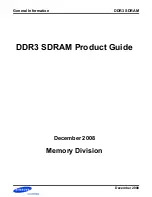
Section 363-742-102
Revision 01
Page 7
8. TERMINAL MANAGEMENT
8.01
The terminal management function at the remote
terminal enables a technician to monitor the entire PG-Flex
system through an ASCII terminal (or equivalent) connected
to the maintenance port. The pin-outs for the standard RS-
232 (DB-9) maintenance port connector are shown in Figure
4. With the management function, the technician can view
status, configuration, performance, and inventory
information, but cannot make any changes or initiate a
subscriber test access.
8.02
Craft Maintenance Port. The craft maintenance
port to which the management terminal connects is available
at both the CO Line Unit and all RT Line Units. The craft
port is set up as DCE with 8 data bits, 1 stop bit, and no
parity. Press the space bar several times invokes the autobaud
feature, which covers a 1,200 to 9,600 bps range.
8.03
Menus and Displays. Figure 5 shows the menu
structure of the terminal management system. Table 4 defines
the terms appearing on the Status displays. Following are
brief descriptions of each menu and display screen:
•
Log On Screen. The Line Unit displays this
screen when it detects the user's input from the
maintenance port while in an idle state. Password
input is echoed with "*" characters. If the
technician does not enter the correct password
after 5 tries, the Line Unit locks out the log on
procedure for 10 minutes.
•
Main Menu. After receiving a correct password,
the terminal displays the Main Menu from which
the technician can choose any of the following
options:
– Status
– Setup
– Inventory
•
Status. By selecting the Status option (A) from
the Main Menu, the technician can:
– Display System Status to show the equipment
installed in the system and the current status
(in alarm or not) of the equipment. An "*"
next to the unit name indicates that the unit is
currently in the alarm state.
– Display Channel Status to show the current
status of all channels in the system. Each
channel has one of the following status
conditions:
IDLE: The channel is not off-hook or
ringing.
RING: The channel is ringing.
OH: The channel is off-hook.
ALRM: The channel is in alarm.
– Display HDSL Status to show the status of all
the HDSL segments and request the user to
select the segment of the HDSL to be
displayed. Each HDSL segment has one of
the following status conditions:
ACTIVE: The segment is functioning
normally.
ALARM: The segment is in alarm.
NONE: The segment is not equipped.
– Display Performance History to show the 24-
hour performance history or the 7-day
performance history of the HDSL segment
selected.
– Display Alarm History to show the history of
all the alarms that have occurred since the last
time the history is reset. Alarms are reported
with their first occurrence, last occurrence,
number of occurrences, and current status.
•
Setup. By selecting the Setup option (B) from
the Main Menu, the technician can view the
following information:
– System Time, Date, and ID
– Auto Log-Off Time
– Metered Tone Frequency
– Ring Frequency
– HDSL 24-Hour ES Threshold
– HDSL Margin Alarm Threshold
– Alarm On Threshold
– Alarm-On Configuration
•
Inventory. By selecting the Inventory option (D)
from the Main Menu, the technician can view
manufacturing information of all the units in the
system. At the CO, the command displays all
units in the system; at the RT, only those units in
the local cage are displayed.






























